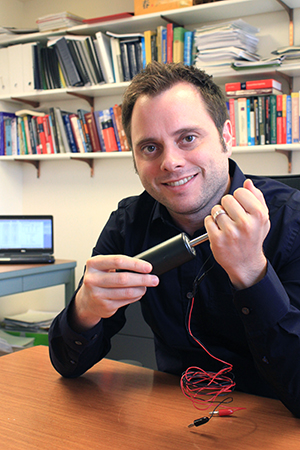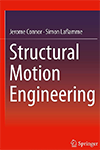
Civil, construction and environmental engineering Assistant Professor Simon Laflamme and his former Massachusetts Institute of Technology (MIT) thesis supervisor, Professor Jerome Connor, recently co-authored a textbook on structural motion engineering.
 The book, aptly titled “Structural Motion Engineering,” reviews formulas and theory based on several topics: calibration of the stiffness of structural columns and beams, passive damping systems, active damping systems, and semi-active damping systems to control for structural motion.
The book, aptly titled “Structural Motion Engineering,” reviews formulas and theory based on several topics: calibration of the stiffness of structural columns and beams, passive damping systems, active damping systems, and semi-active damping systems to control for structural motion.
One can pre-order the book now on Amazon or with the publisher, Springer.
“The future of structural design lies in a motion-based approach,” Laflamme said. The strength-based approach, which considers load capacity of a structural system, is a traditional design method; however, with progress in construction techniques and materials, structures are becoming more flexible, and structural motion (from wind and earthquakes, for example) is becoming a critical, often governing aspect in design.
“Constructing lighter structures typically is economical, but these structures are prone to vibrations,” Laflamme said. “It results in a need to suppress these vibrations directly through the structural design phase.” The goal is to make buildings safer and more comfortable for occupants, he said.
The textbook will be used in MIT structural engineering courses this fall. Laflamme plans to develop an Iowa State course based on the book in the foreseeable future.
Laflamme earned a civil engineering doctorate at MIT in 2011, where he completed his dissertation, under Connor’s direction, on the control of large-scale structures with large uncertainties.